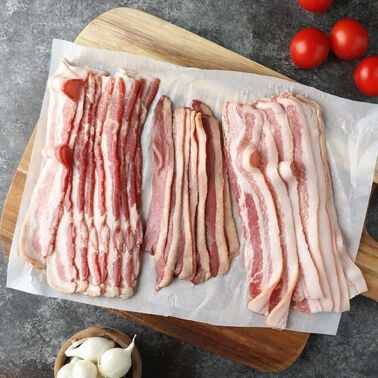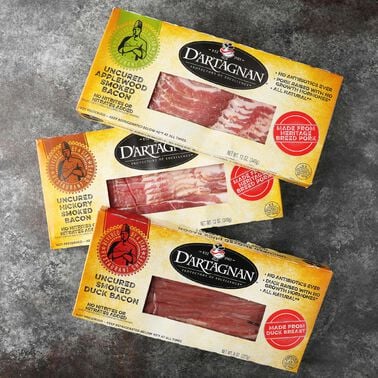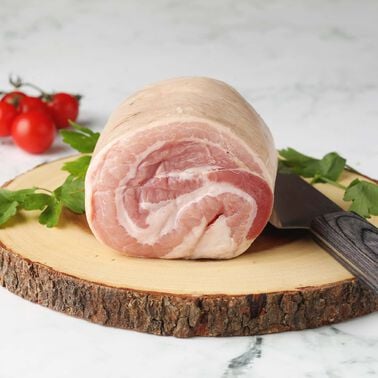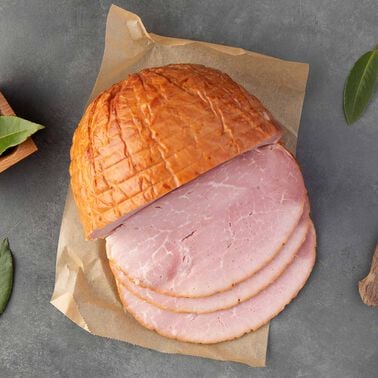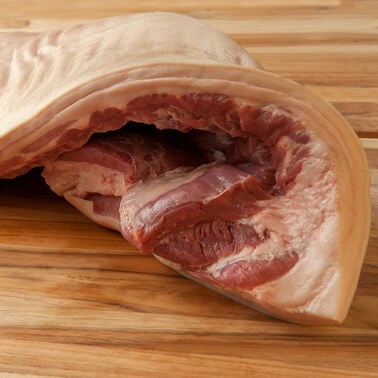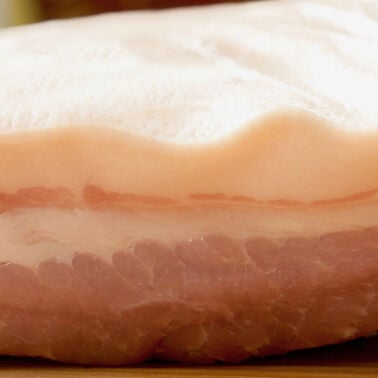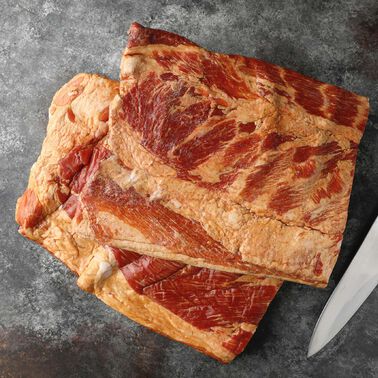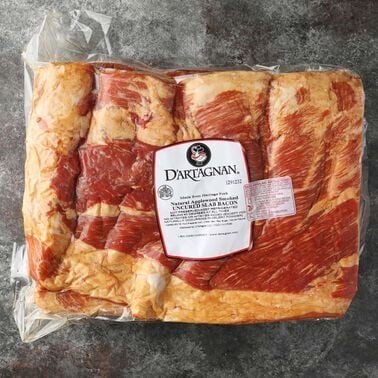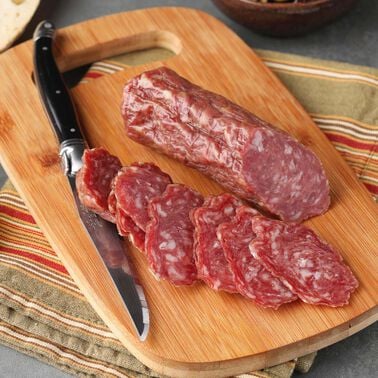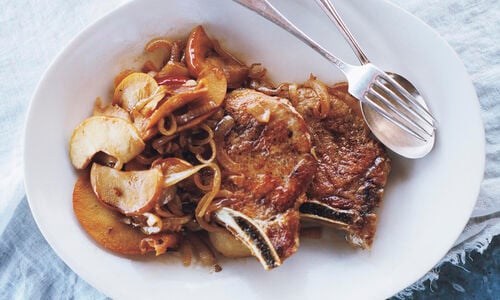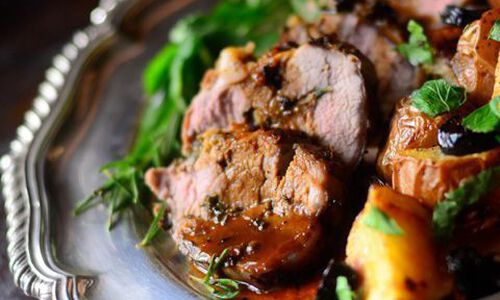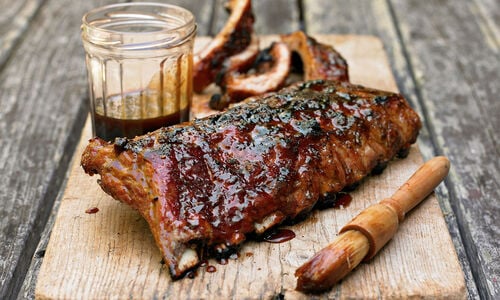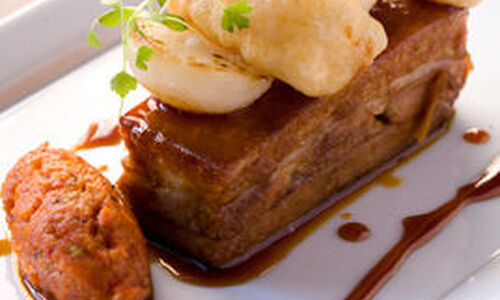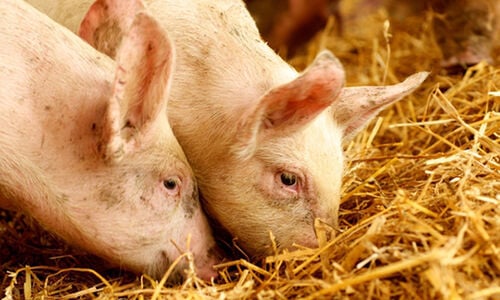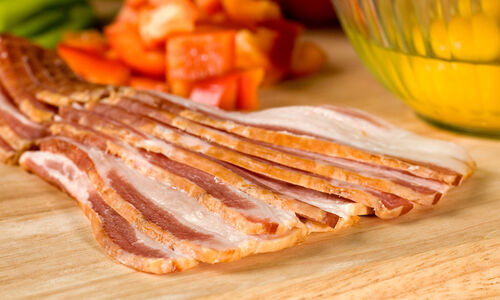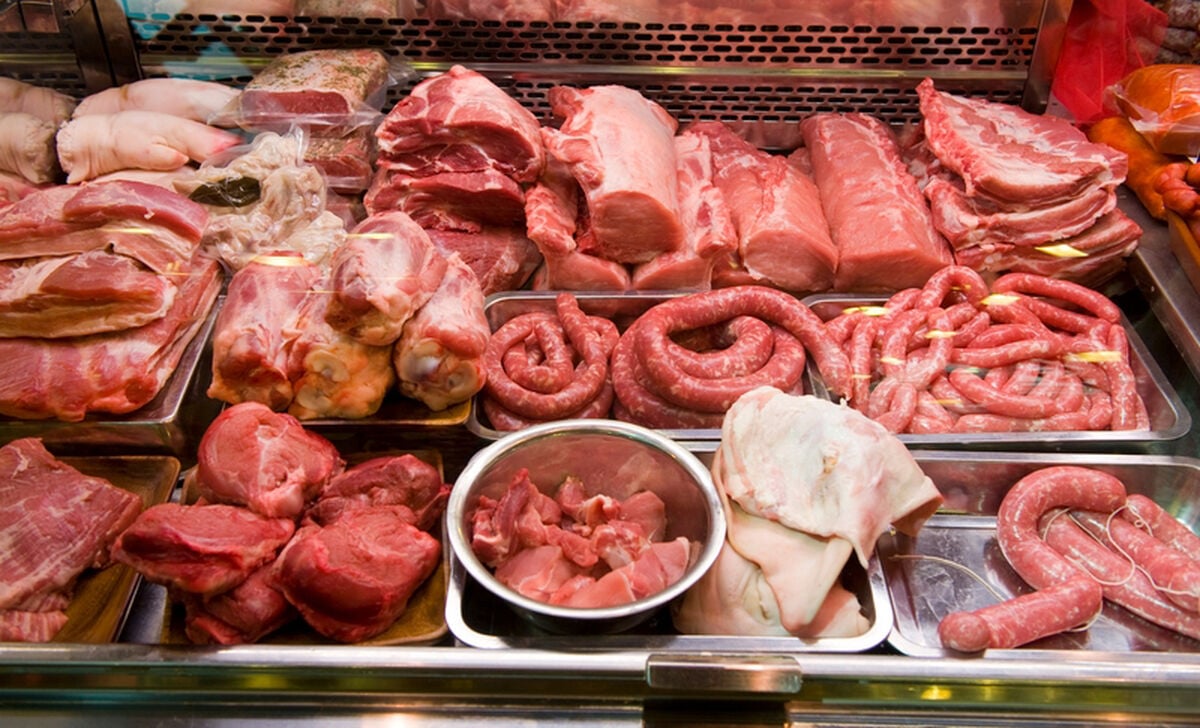
And what time to be in love with the bounty of pork; more and more, today's chefs are embracing old-world culinary traditions and using parts of the pig that one normally would be hard-pressed to find in a modern grocery store. We're certainly grateful that they are, because, from the tip of the snout to the curly tail, there's truly a carnivorous bounty to be enjoyed. In celebration of the entire animal, here are a few of the dishes that we find ourselves gravitating towards when we hear that pork is on the menu:
Pig Feet
Where once a pig's foot was eaten only by the poor, the lowly foot (or "trotter," as it's also known) is having a massive renaissance in popularity. We're particularly fond of the eponymous preparation -- slow braised until heart-meltingly tender, with crispy skin to contrast -- at Montreal's Au Pied de Cochon by the brilliant Chef Martin Picard, who, among other things, has a fondness for topping many of his dishes with a generous helping of foie gras. Twist our arms!
Pork Hock
The trotter end of the pig's leg, the hock can be removed and reserved after roasting or smoking. Sure, the hock can be enjoyed on its own, but we love using it to flavor and thicken dishes such as chili and winter stews, or deboned, diced and served with braised greens.
Pork Liver
Pork livers don't seem to find their way on haute cuisine menus very often these days, but that's not to say that they don't deserve to. While not as delectably fatty as that of a foie gras duck, the pig's liver works best when combined with other ingredients to, for example, make Cajun classics such as dirty rice, as well as Cajun boudin, a spicy sausage made from ground pork meat, liver and rice stuffed into a natural casing and boiled or grilled.
Pig Blood
You don't have to be a creature of the night to enjoy the delicious benefits of eating animal blood. For centuries, cooks have used blood for a variety of purposes in the kitchen, including as a thickener for soups and stews. We most love blood when it's used to make sausage, like the classic English "black pudding," as well as the traditional French boudin noir.
Pork Fat or Lard
Who needs vegetable shortening when you have the miracle of hog lard? Rendered pig fat, particularly "leaf lard," is the ultimate secret weapon for those who love to bake. Employ some high-quality lard when making your favorite pie crusts and biscuits, and as soon as you see how buttery and flaky they turn out, you'll wind up swearing off that vegetable stuff for good.
Pig Skin
When properly rendered, we love to fry up the skin to make crunchy pork cracklins, as well as chicharrones, a Mexican and South American fried pork skin that's either enjoyed on its own or served on tacos or pupusas, topped with chili peppers, pickled onions and sour cream.
Pork Cheeks/Jowls
Did you think that all bacon had to come from the belly of the pig? When salt-cured (but not smoked), the jowls of a pig transform, almost miraculously, into guanciale, or "cheek bacon." It's strong flavor and delicate texture make it incomparable when incorporated into a bowl of fresh, hand-cut pasta, in dishes such as spaghetti alla carbonara.
